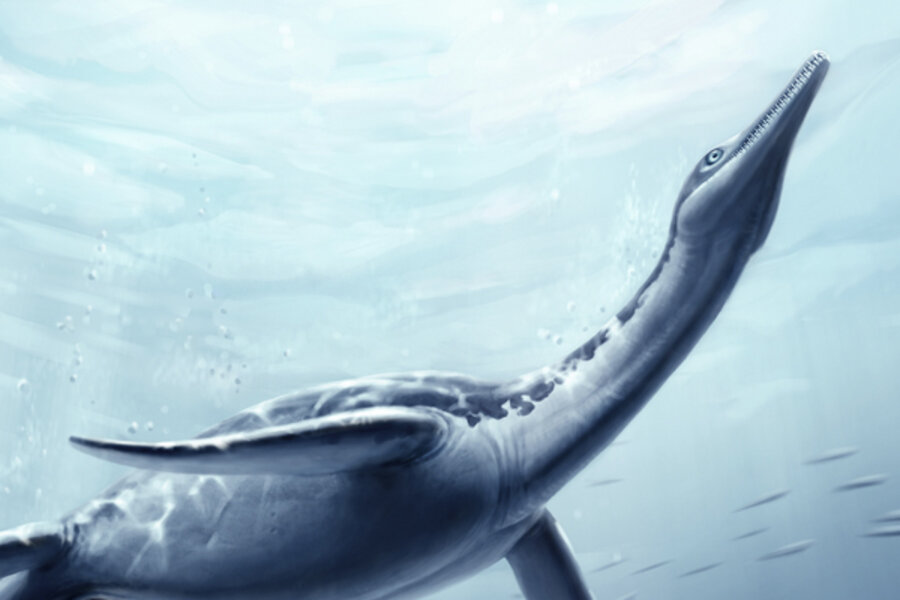Pregnant fossil found in Kentucky
Loading...
A giant marine reptile was likely ready for her baby shower about 78 million years ago when she died. The fossilized pregnant plesiosaur was carrying a large fetus when she was unearthed in Kentucky, the first expectant plesiosaur mom to be found since the species was discovered almost 200 years ago.
"This is the first known pregnant plesiosaur. It demonstrates that the plesiosaur gives live birth and did not crawl out on land [to lay eggs]. It puts this 200-year mystery to rest," said study researcher Frank O'Keefe, of Marshall University in West Virginia. "The really interesting thing is how big this bouncing baby is. It's really large by reptilian standards, by human standards, by any standards you use." [World's Cutest Baby Wild Animals]
The sheer size of the fetus, and the fact that the mother was only carrying one offspring, indicate that these marine reptiles gave live birth and may have invested much more time and energy into their offspring than other marine reptiles at the time, similar to how humans invest years raising kids.
"When the thing is born, you have all your eggs in one basket, so you are going to want to take care of it." O'Keefe added.
Big wimpy baby
The mama plesiosaur, of the species Polycotylus latippinus, was about 15.4 feet (4.7 meters) long and was carrying a 5-foot (1.5 m) fetus.
"This animal is not ready to be born; it's about two-thirds done," O'Keefe told LiveScience. "It would have been a couple meters [6.5 feet] long by the time it was born."
Many parts of the fetal skeleton hadn't fully turned into bone, including its skull, suggesting the little one wasn't nearly done gestating; the fetus also had disproportionally short flippers and a large head, another sign it wasn't fully developed.
"That's what really strikes you about this baby, how not ready for prime time it is," O'Keefe added. "It wouldn't have been able to protect itself or eat."
Mammal-like traits
The finding, which is detailed in the Aug. 12 issue of the journal Science, suggests that this species at least gave birth to live young. Called viviparity, live birth has been observed in other marine reptiles from this period, but in past examples, multiple, smaller (less than 30 percent of the size of the mother) offspring were birthed.
Birthing just one big baby is rare for this period, and suggests this mother reptile would be investing lots of resources into caring for the "only child."
This high maternal investment strategy, called "K-selected life history," is at one end of the life-history continuum, with the other extreme being the "r-selected" variety, in which many offspring receive little to no parental investment after fertilization.
One factor that influences life history is the environment. If it is stable, higher investment in lower number of offspring pays off, because they are less likely to be lost. If the environment is undergoing changes, making lots of babies could be a better strategy (so, if one dies, there are others to pass on your genes).
"Compared with the Triassic, the Jurassic and the Cretaceous had relatively stable environments. It is very possible that some plesiosaurs if not all were K-selected, although more solid evidences are needed," Xiao-chun Wu, a researcher at the Canadian Museum of Nature who wasn't involved in the study, told LiveScience in an email.
The K-selected life history indicates that the plesiosaurs may also have lived in familial social groups and engaged in extended parenting, similar to some modern-day skinks or marine mammals such as whales and dolphins.
The fossil is currently on display at the Natural History Museum of Los Angeles County.
You can follow LiveScience staff writer Jennifer Welsh on Twitter @microbelover. Follow LiveScience for the latest in science news and discoveries on Twitter @livescience and on Facebook.





